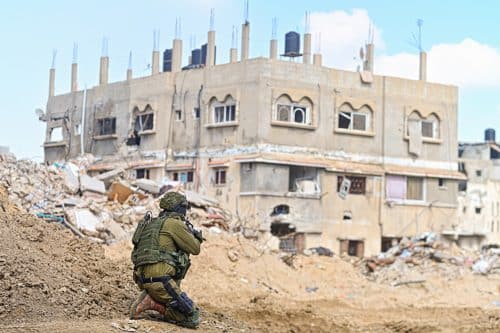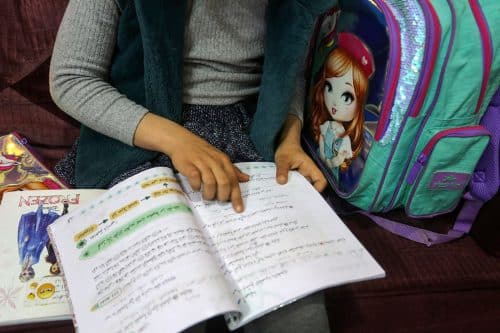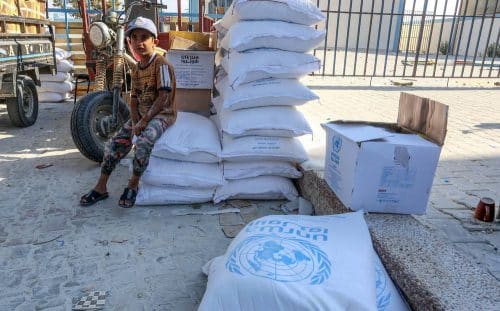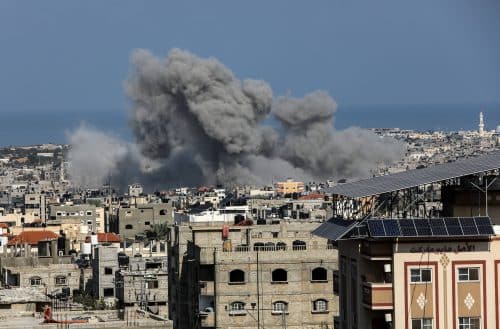
For decades, the world at large and Israeli society in specific have been debating the question of Judea and Samaria. Should a Palestinian State take form in those territories? Should Israel annex the area, and can it? Apparently everyone in the West has a firm opinion on the subject, but many are relying on inaccurate data and half-truths, not to say absolute lies.
It is surprising to discover that like the average citizen, the Israeli decision-makers too rely on inaccurate data wherever the matter of Arab demography in Judea, Samaria, and the Gaza Strip is concerned. Over the years, the country’s decision-makers have refrained from determining what the exact figures are, and depended instead on figures from the Palestinian Authority’s Central Bureau of Statistics, [1] which — by the nature of things — has a clear interest in falsifying data for various reasons, including the padding of budgets, the rallying of world opinion, and most of all, the imposition of pressure on Israel, as Israel would rather yield territory than upset its demographic balance. There is no need to expound on why the answering of such a sensitive question should not be outsourced to an institution that funds terrorism and that objects to the existence of Israel as a Jewish state.
Are the numbers from the Palestinian Authority inflated?
There are currently two main approaches regarding the demographic question. The first contends that the figures from the Palestinian Central Bureau of Statistics are reliable and that there truly is a demographic danger in annexing Judea and Samaria to the State of Israel. Those who favor this approach claim that more than 3 million Arabs presently live in Judea and Samaria in addition to roughly 2 million Arabs in Gaza. [2]
The second approach contends that the population figure from the Palestinian Central Bureau of Statistics is a complete falsehood amounting to nearly double the true number of Palestinian residents in Judea and Samaria,[3] a true number in the area of 1.6 million. This approach relies on independent research that its supporters conduct, along with statements from the past by senior officials of the Palestinian Authority. [4] The lower figure means that Judea and Samaria could be annexed with no great fear of the demographic implications. [5]
It seems that throughout the Land of Israel the demographic problem is indeed smaller than most people believe: the average number of births per Arab woman in Judea and Samaria is lower today than the number per Jewish woman — approximately 2.98 among the Arabs versus approximately 3.13 among the Jews. [6] In addition, there is net emigration from the Judea and Samaria area of 20,000 emigrants per year, mostly young people.[7] And the Palestinian Central Bureau of Statistics is also counting people who died many years ago; its census included people born in 1845.
“It’s embarrassing that Israel doesn’t know how many Palestinians live in Area C.”
Considering the issue’s importance, the State of Israel should be expected to determine the exact number of Arabs living in the Judea and Samaria area, in order to let us know whether the Palestinian Central Bureau of Statistics is in fact falsifying data as experts in the discipline contend and only 1.6 million Palestinians are residing in Judea and Samaria, or whether the figures from the Palestinian Central Bureau of Statistics are actually true and the number of Palestinian residents in Judea and Samaria stands at 3 million or so.
In 2016 a subcommittee of the Foreign Affairs and Defense Committee met and the question arose as to how many Arabs live in Area C of Judea and Samaria. [8] During the discussion, it emerged that the State of Israel is unable say how many people do live in that area and relies on data from the Palestinian Authority[9]. As Knesset Member Hilik Bar of the Zionist Camp party said during the discussion, “Notwithstanding my respect for the Coordinator of Government Activities in the Territories and the Population Authority, I feel it’s embarrassing that the State of Israel doesn’t know how many Palestinians are really living in Area C. We know how many tanks are in Syria, but we don’t know about citizens under our own responsibility… And what’s more, because the Prime Minister and Defense Minister have become promoters of the two-state idea, I’d like to know how many Palestinians we would be parting from, or how many potential citizens the state would have.”
That discussion illustrates a deeper point: If the State of Israel doesn’t know how many people reside in Area C, an area where it holds municipal and security responsibilities, how can it know how many people reside in Areas A and B, where most of the Arabs of Judea and Samaria live? How can the State of Israel rely on data from an institution that wants Israel destroyed, hasn’t condemned the Simchat Torah massacre, and is currently cooperating toward the objectives of Hamas?
The specialized unit that closed in 1997
In a 2022 interview following his publication of an open letter, diplomat Yoram Ettinger — a member of the American–Israeli demographic research team — related that between 1993 and 1996 a unit had operated under the Israeli Central Bureau of Statistics with the purpose of examining data from the Palestinian Central Bureau of Statistics. [10] That unit exposed discrepancies and contradictions in the Palestinian figures, but the unit was closed in 1997. It appears that since then, the State of Israel has been relying on figures from the Palestinian Authority without verifying them. Isn’t it time to re-establish the unit and stop trusting the Palestinian Authority’s unverified figures?
Besides the political and strategic need, there is an obvious security need for a demographic snapshot of Judea and Samaria, and all the more so in light of the crumbling of assumptions in the wake of the Simchat Torah massacre. How can the IDF prepare for a scenario in which the Arabs of the Judea and Samaria area decide to invade the territory of the State of Israel, if it doesn’t know the number of people in that area? [11] How will it know how many battalions and brigades to deploy at the borders? How will it know how many people are capable of bearing arms in those territories? Above and beyond the military considerations, how can the State of Israel be prepared to manage risks at the national level if it doesn’t conduct an organized census that will give it the tools for making fundamental decisions?
In summation, the demographic question in Judea and Samaria presents Israel with many problems and challenges — economic, political, security-related, and more. In order to understand what options are open to us as a state, and to solve the problems, we must know the exact figures from the field. For that purpose, we must ascertain — by whatever means are at our disposal as a nation, whether involving intelligence activity or other tools — how many Arabs are living today in Judea and Samaria, where their residences are, what their trends of migration are, and what conditions the city dwellers and village dwellers of those territories live under. Only afterward will it be possible to arrive at wise decisions regarding the most correct and appropriate solution to the Arab–Israeli conflict.
The content of this article is solely the opinion of the author and does not reflect a stand on the part of the IDSF.
[1] See https://www.maariv.co.il/journalists/opinions/Article-951114
[2] See https://www.maariv.co.il/new/military/Article-629256
[3] See https://www.meteg.co.il/%d7%a2%d7%99%d7%93%d7%9b%d7%95%d7%9f-2023-%d7%a9%d7%9c-%d7%94%d7%a1%d7%95%d7%92%d7%99%d7%94-%d7%94%d7%93%d7%9e%d7%95%d7%92%d7%a8%d7%a4%d7%99%d7%aa-%d7%a8%d7%95%d7%91-%d7%99%d7%94%d7%95%d7%93%d7%99/
[4] There are known references to a purported 1998 statement by Hassan Abu Libada, a former head of the Palestinian Central Bureau of Statistics who was charged with corruption and fraud, that “We counted 325,000 people who have been living for more than a year outside Palestinian territory.”
[5] Caroline Glick, Sipuach Achshav, Sela Meir, 2015, pp. 159–172.
[6] See https://idsf.org.il/opinion/%D7%96%D7%94-%D7%9C%D7%90-%D7%94%D7%93%D7%9E%D7%95%D7%92%D7%A8%D7%A4%D7%99%D7%94-%D7%96%D7%94-%D7%94%D7%A9%D7%A7%D7%A8/ and the 2022 figures from the Israeli Central Bureau of Statistics. The decline in the number of births per Arab woman is a widespread phenomenon throughout the Middle East, applying in Arab states such as Morocco, Saudi Arabia, Syria, and Libya.
[7] See https://mida.org.il/2018/05/08/%D7%94%D7%A0%D7%AA%D7%95%D7%A0%D7%99%D7%9D-%D7%9E%D7%95%D7%9B%D7%99%D7%97%D7%99%D7%9D-%D7%90%D7%99%D7%9F-%D7%A9%D7%95%D7%9D-%D7%A4%D7%A6%D7%A6%D7%AA-%D7%96%D7%9E%D7%9F-%D7%93%D7%9E%D7%95%D7%92/
[8] See https://main.knesset.gov.il/activity/committees/foreignaffairs/news/pages/pr070616.aspx
[9] In this connection, Abu Libada said of the first Palestinian census, as it was under way in 1997: “In my opinion, it is as important as the intifada … It is a civil Intifada.” See https://www.nytimes.com/1997/12/11/world/palestinian-census-ignites-controversy-over-jerusalem.html
[10] See https://www.giluydaat.co.il/%D7%A0%D7%99%D7%A4%D7%95%D7%97-%D7%9E%D7%9C%D7%90%D7%9B%D7%95%D7%AA%D7%99-%D7%A9%D7%9C-1-5-%D7%9E%D7%99%D7%9C%D7%99%D7%95%D7%9F/
[11] The distance from the westernmost point of the Green Line to Tel Aviv measures roughly 20 kilometers. Other cities of Central Israel, including Kfar Sava and Rosh HaAyin, are even less distant.





